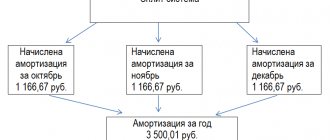How is output determined?
Output is a direct indicator of labor productivity. There are three main methods for determining it, namely: natural, monetary and labor.
The first option involves dividing the volume of products that were manufactured or sold by the average number of employees directly involved in the production process. This technique is applicable only to those enterprises that produce products of the same name.
If an organization produces heterogeneous products that cannot be reduced to one unit of measurement, then it is advisable to use the cost method. In this case, output is the ratio of the monetary equivalent of all manufactured goods to the number of workers.
As for the labor method of determining output, we note that it is used to assess the labor productivity of individual teams, jobs or departments. The indicator is determined in standard hours. This takes into account not only finished products, but also work in progress. The value of this indicator is that it helps to assess the efficiency of labor organization and the rational use of labor.
Calculation of output and labor intensity
Output depends on the average number of employees and the time spent on production. The formula looks like this:
- V
– quantity of manufactured product; - T
is the time spent on its production, - N
– average number of employees.
Labor intensity shows how much effort one worker puts into creating a unit of goods. Calculated as follows:
Let's look at a specific example:
In 5 days, the confectionery shop produced 550 cakes. There are 4 confectioners working in the workshop.
- В=V/T=550/4=137.5 – the number of cakes made by one pastry chef per week;
- В=V/N=550/5=110 – the number of cakes made within one day.
Labor intensity is equal to:
R=N/V= 4/550=0.0073 – indicates the amount of effort the pastry chef puts into making one cake.
Production rate
Production is an indicator that is determined based on the results of a certain period. However, there are also standards that define the desired state of affairs. We are talking about normative development. To determine this indicator, it is necessary to multiply the duration of the period by the number of workers participating in the production process. The result is divided by the time that, according to the standards, is allotted for the production of a unit of product. In this way, the maximum result that can be achieved at the enterprise is determined.
Production analysis
Output is the most important indicator of an enterprise’s performance. To draw any conclusions based on it, it is necessary to conduct a thorough analysis. It may consist of the following:
- dynamics of the indicator over time (based on data for several years, it is possible to determine trends in the operation of the enterprise, as well as make forecasts for the future situation);
- factor analysis (determines which factors most influence labor productivity and output, which makes it possible to adjust further work);
- determination of growth rates and increments (shows the ratio of the increase in output for different periods, which allows you to study in more detail the periods with unsatisfactory indicators).
Indicators for determining output
Output, as an indicator of labor productivity, is regularly calculated to evaluate the functioning of the enterprise. In order to determine this value, it is necessary to collect the following information:
- volume of production in physical or value terms (and you can take the actual value of the indicator, or you can take the planned value in order to calculate standard output);
- the number of employees who are directly involved in the production process (this makes it possible to assess the effectiveness of their work, as well as determine areas for rationalization of personnel);
- duration of work of production units (irreplaceable if you need to estimate product output per unit of time).
Labor productivity, output and labor intensity
Productivity This indicator reflects the ratio of the volume of manufactured (sold) products to the number of employees. In this case, generalizing, partial and auxiliary coefficients are calculated. The first group includes, in particular, average annual production. Formula: B = Volume of production / Number of employees = Volume of production / Amount of time spent. Changes in average annual output may be due to:
- adjusting the number of employees;
- reduced labor intensity;
- growth of non-production costs;
- labor organization - an increase in all-day downtime, absences with the permission of the management, due to illness, absenteeism;
- changes in product structure.
Numerical indicators are the time spent in physical terms, calculated for one man-day (man-hour).
How production is accounted for
Output is a quantitative expression of labor productivity. Since this indicator plays a fairly important role in analyzing the operation of an enterprise, it is necessary to somehow keep records of it. This is especially true in cases where a piece-rate wage system is used, which directly depends on the output indicator. Keeping such records gives the entrepreneur the following opportunities:
- availability of data on the performance results of each employee;
- fair distribution of wages in accordance with production indicators (excluding defective products);
- ensuring control over the compliance of the quantity of products produced with the materials and raw materials released to the workshop);
- identification of “bottlenecks” that impede the movement of semi-finished products between workshops and departments.
As for modern accounting systems, the following are most widely used in relation to production:
- in accordance with the work order for performing a certain amount of work;
- in accordance with the so-called “route map”;
- assessment of the indicator based on the final results of the work.
Output level
Output is the amount of finished products (in some cases, components and semi-finished products are also taken into account) that were produced by one unit of labor or per unit of time. In addition, the concepts of output level indicators are also distinguished:
- average output per hour - determined by dividing the volume of products manufactured during the period by the number of man-hours of work in the workshop;
- average output per day - directly related to the previous indicator (determined by multiplying the value per hour by the length of the working day or shift);
- output per worker is determined by the ratio of products manufactured per month (or any other reporting period) to the average number of production personnel.
Basic information
Labor productivity is the most important criterion for assessing the effectiveness of workers. The higher it is, the lower the cost of producing goods. It is he who determines the profitability of the enterprise.
By calculating labor productivity, you can find out how fruitful the work of workers is for a given period of time. Based on the data obtained, it is possible to plan the further work of the enterprise - calculate the expected volumes of production, revenue, draw up cost estimates and purchase materials for production in the required quantity, hire the required number of workers.
Labor productivity is characterized by two main indicators:
- Output
, which indicates the volume of products produced by one worker over a certain period of time. Often calculated for one hour, day or week. - Labor intensity
, on the contrary, indicates the amount of time that a worker spent on the production of one unit of goods.
It is worth noting that increased productivity leads to reduced production costs. Thus, by increasing productivity, you can significantly save on wages and increase production profits.
What can affect production
Output is the amount of product produced per unit of time. It is worth noting that this indicator is not stable and may fluctuate depending on a number of factors:
- the introduction of new technologies or operations can have two effects: on the one hand, it leads to the rationalization of the production process, and on the other, it can cause delays during the development period;
- adding new workers to the team who need time to adapt and become familiar with the production process;
- the use of previously unused raw material resources (here, too, production may decrease for some time);
- mass production leads to natural fluctuations in this indicator.
Labor productivity statistics
- Subject and tasks of socio-economic statistics
- World statistics
- Methods for classifying and grouping statistical information
- Income indicators
The efficiency of using personnel in an enterprise is characterized by labor productivity indicators.
Labor productivity is an economic category that expresses the degree of fruitfulness of people’s purposeful activities in the production of material and spiritual goods.
Labor productivity is determined by the amount of products (volume of work) produced by an employee per unit of time (hour, shift, quarter, year) or the amount of time spent on producing a unit of product (performing a specific job).
Labor productivity is calculated through a system of indicators of output and labor intensity. Output is calculated as the quotient of dividing the volume of work performed (output) by the number of employees (labor costs). Labor intensity - by dividing labor costs (number of workers) by the volume of work (products). Indicators of production and labor intensity can be calculated in monetary terms, in standard hours, in physical terms and in conditionally natural terms. Output characterizes the volume of work (products) per unit of strength, and labor intensity characterizes labor costs per unit of production (work).
Labor productivity changes under the influence of factors that can be external to the enterprise and internal.
External factors include:
- natural - in difficult natural conditions (fog, heat, cold, humidity) labor productivity decreases;
- political - at the will of the state, capital is accumulated in the hands of a few, which leads to a massive reluctance to work;
- general economic - credit, tax policy, systems of permits (licenses) and quotas, freedom of entrepreneurship, etc.
Internal factors:
- changes in the volume and structure of production;
- application of achievements of science and technology in production;
- improving the organization of production and management at the enterprise;
- improving the organization and stimulation of work.
When determining labor productivity, one should distinguish between normative (time spent according to current standards); planned (planned costs per unit of production) and actual labor intensity of products (this is the actual time spent).
Depending on the circle of workers whose labor is included in the labor intensity, a distinction is made between production (labor costs of the main workers), full (main + auxiliary workers) and total labor intensity (the entire industrial production enterprise).
An enterprise may have reserves for increasing labor productivity - these are unused opportunities for intensifying labor, for quantitative and qualitative increase in personnel and production potential, etc. Reserves are divided into current and future.
The effective use of enterprise personnel depends on management’s ability to influence the employee’s ability to work in order to direct them in the direction necessary for the company.
Personnel management consists of:
- in the gradual process of determining the need for personnel, planning to meet this need through hiring and placement of labor at work sites;
- in the process of training, advanced training and retraining of personnel in accordance with the changing conditions of production and sales of products and works (services) by the enterprise;
- in improving the organization and working conditions worthy of modern production;
- in ensuring the movement of personnel both horizontally (expanding the range of specialties mastered, the number of units serviced, etc.) and vertically (assigning regular or extraordinary tariff grades, classes, categories, ranks and occupying higher positions;
- in the development of forms of mentoring and apprenticeship;
- in creating comfortable social and psychological working conditions for everyone and the team as a whole.











